DAYS OF THE WEEK
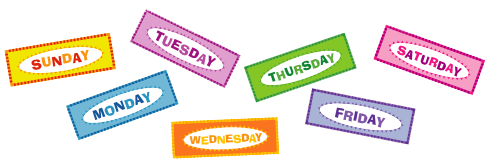
Unit Overview
In this unit, you will learn the history of how the days of the week were named. You will investigate a way of marking time with a water clock similar to how time was measured in ancient times. Once early people understood how to measure an hour, they then were able to make up a system to name the days of the week based on the names of the heavenly bodies they observed. After taking a few minutes to review, we will look at a modern-day calendar and practice using it.

Days of the Month Review
The following is Susie’s modern-day calendar. Look at it very carefully and then answer the questions that follow.
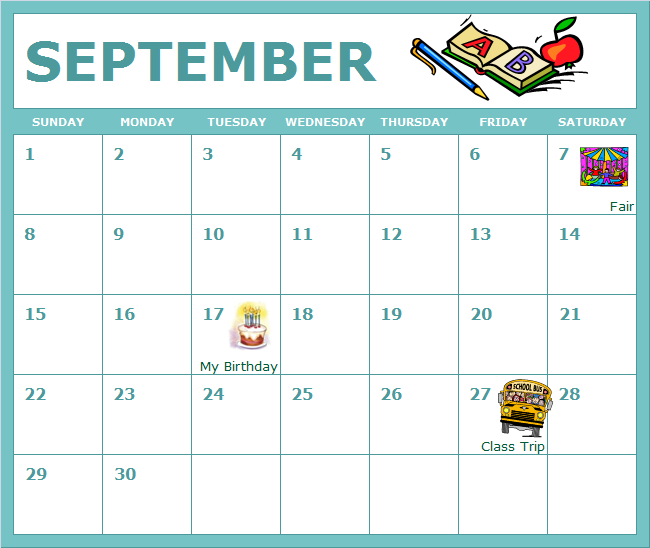
|
There are 30 days in September. "Click here" to check the answer.
There are 4 weeks in September. "Click here" to check the answer.
Susie went to the fair. "Click here" to check the answer.
Susie’s birthday is on Tuesday. "Click here" to check the answer.
Susie’s birthday was 10 days after the fair. "Click here" to check the answer. |
The days of the week are clearly listed on the calendar, aren’t they? Have you ever wondered how the days of the week were named? Read on to find out.
How the Days of the Week Were Named
Folklore (stories passed down through the years) tells us that the days of the week were named long ago from men who studied the stars. They were called astrologers.
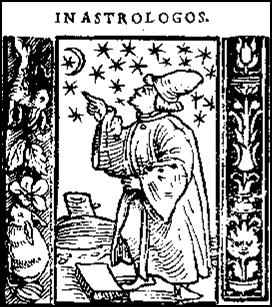
Many, many years ago, some time before 650 BC, the astrologers named the days of our week. Let’s see how they did it.
First, the astrologers learned to measure an hour.
| An hour is probably enough time for you to eat your lunch and play for a while; therefore, we call it “lunch hour”. |  |
|
| An hour is probably the amount of time you are in church. | 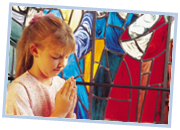 |
|
| An hour is probably the amount of time you take a gymnastic lesson. |  |
|
| An hour is probably the amount of time you listen to stories at the library -- you know, “Story Hour”. |  |
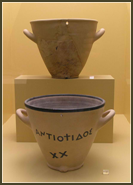 The astrologers learned to measure an hour by using a water clock. They built the water clocks so that it took exactly one hour for the water to run from the top to the bottom. The picture is a display of two water clocks from a museum in Athens, Greece. (The Ancient Agora Museum)
The astrologers learned to measure an hour by using a water clock. They built the water clocks so that it took exactly one hour for the water to run from the top to the bottom. The picture is a display of two water clocks from a museum in Athens, Greece. (The Ancient Agora Museum)
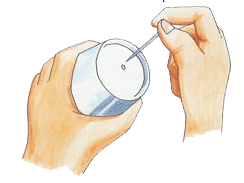 Let’s have some fun and make a water clock. Your clock does not have to take exactly one hour for the water to pass through. Even so, you will get the idea of how early astrologers could tell when one hour had passed.
Let’s have some fun and make a water clock. Your clock does not have to take exactly one hour for the water to pass through. Even so, you will get the idea of how early astrologers could tell when one hour had passed.
 Click on the mouse to view the instructions for "Making a Water Clock”. Your adult mentor will help you follow the directions. When you have finished the water clock, send a picture of the water clock to your VLA Teacher.
Click on the mouse to view the instructions for "Making a Water Clock”. Your adult mentor will help you follow the directions. When you have finished the water clock, send a picture of the water clock to your VLA Teacher.
![]() After you have completed the water clock, scroll to questions #8 through #10 to answer questions about your water clock.
After you have completed the water clock, scroll to questions #8 through #10 to answer questions about your water clock.

Water clocks helped the early people measure hours. When the clock had run one hour, they rang a bell once. When it had gone another hour, they rang the bell two times. The night had 12 hours. So, the bell rang 12 times at dawn. Then they began the hours of daytime.
The following is the order for the sun, moon, and planets according to their speed, as seen by the early astrologers
 |
|
The Sun was first, then the Moon, then Mars and so on with Saturn being last.
To count the hours, they began with the sun. That was the most important of the seven (7) space bodies. When they came to the end of one day, they began the next day with whatever heavenly body came next. If one day ended with Mercury, the next day began with Jupiter. They kept going for seven (7) days, naming the days by all different heavenly bodies. This is how the seven days of the week were named.
The Moon followed the Sun. "Click here" to check the answer.
Mercury was listed after Mars. "Click here" to check the answer.
Venus was listed before Saturn. "Click here" to check the answer. |
Look closely at the chart below. Compare the names of the seven days of the week and the names of the planets. Notice that some of the names of the days look similar to the names of the heavenly bodies while other names look very different.
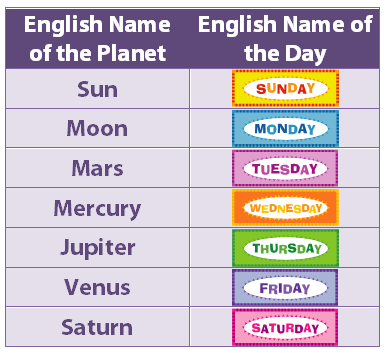
Sunday, Monday, and Saturday "Click here" to check the answer.
Tuesday, Wednesday, Thursday, and Friday "Click here" to check the answer. |
The names are different because they are based on languages used many, many years ago and not the English language we use today.
 Now, practice writing the seven (7) days of the week on paper. Click on the mouse to view and print colorful writing paper.
Now, practice writing the seven (7) days of the week on paper. Click on the mouse to view and print colorful writing paper.

Review Section
In this unit, you reviewed the modern-day calendar and how to use it. You also learned about a historical way of marking time with a water clock. Once early people understood how to measure an hour, they timed the speed of some space bodies.
They listed the space bodies in order of their speed and named the 7 days of the week from the list: Sunday, Monday, Tuesday, Wednesday, Thursday, Friday, and Saturday.
 |
| Unit 2 What Day? Worksheet |